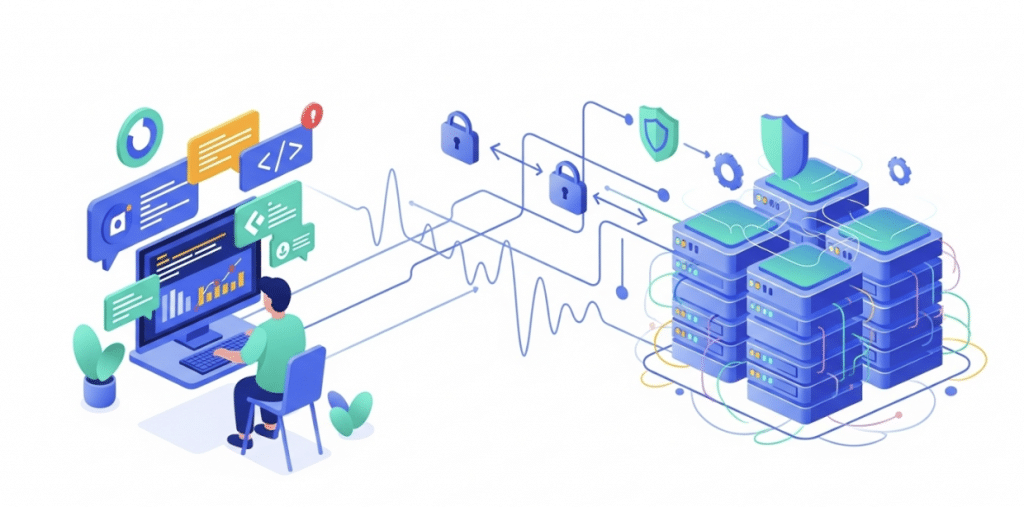
As distributed enterprises expand the reach of endpoints into home offices, branch locations, cloud-managed devices, and remote workers, the once straightforward task of patching has evolved into a mission-critical operation. Gone are the days when IT simply needed to push updates to a handful of office machines. Today’s environments span thousands of devices across multiple operating systems and regions, all of which must stay protected against zero-day threats, third-party software vulnerabilities, and compliance violations. The growing complexity of these networks means patch management now sits at the intersection of cybersecurity, IT operations, and business continuity.
In 2025, modern patch-management tools are no longer just update schedulers, they’re security enablers. The best platforms automate discovery, prioritisation, and deployment while giving IT teams real-time visibility into patch posture across distributed networks. They also integrate with endpoint-management systems, vulnerability scanners, and compliance frameworks to deliver a unified picture of organisational risk. In this list, we highlight five leading solutions built for scale, automation, and security, starting with one that exemplifies the new standard for remote-ready enterprises.
Our Criteria
We evaluated each tool based on these criteria:
- Scalability – ability to manage large endpoint estates across offices, cloud environments, and remote users
- Integration & automation – coverage of OS and third-party patching, workflow automation, reporting, and integration with security tools
- Cross-platform support – handling of Windows, macOS, Linux, and third-party applications
- Security & compliance readiness – real-time visibility, prioritisation, audit trails, and remote/off-VPN support
- Usability and deployment speed – how quickly teams can onboard, configure, and start delivering value
Featured Platforms
1. Action1
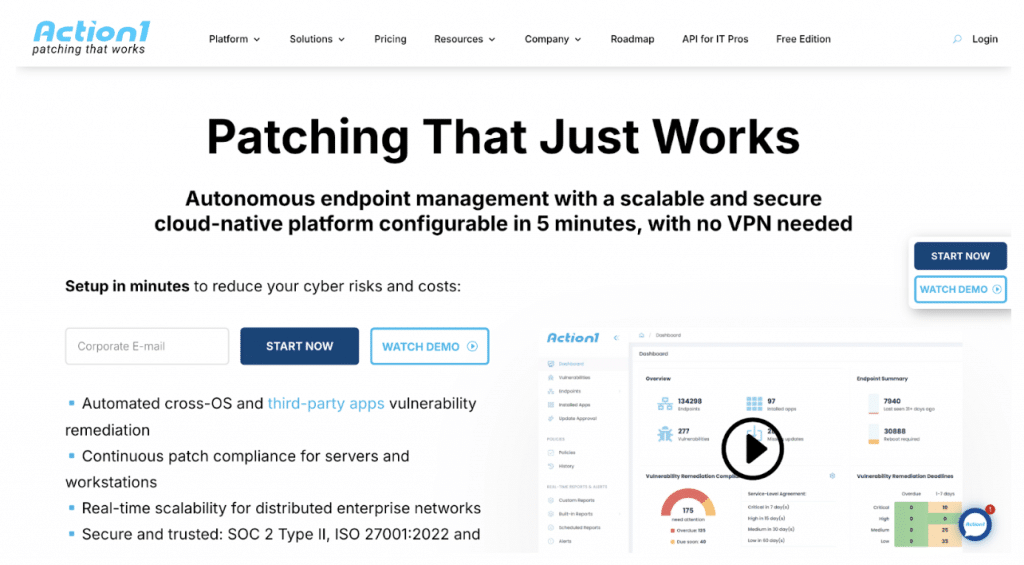
Action1 is a cloud-native patch and vulnerability-remediation platform designed for enterprises that operate remote, hybrid, or branch-heavy endpoint networks. It supports OS patches and a wide catalogue of third-party applications, offers real-time compliance status, and uses a lightweight agent model to support endpoints even when they’re not connected through VPNs.
Recent user feedback in 2025 highlights Action1’s intuitive interface, minimal setup time, and ability to begin managing devices almost immediately. It offers a free tier for smaller environments, yet scales to thousands of devices without additional infrastructure.
In practice, IT teams use Action1 to scan for missing patches across entire fleets, automate deployment policies, and track compliance in real time. For globally distributed or remote-heavy organisations, its peer-to-peer delivery and cloud architecture mean patching can continue uninterrupted, even when devices are off-network.
Key Strengths:
- Rapid, lightweight deployment with minimal infrastructure
- Unified OS and third-party patching for remote or offline endpoints
- Real-time visibility and compliance dashboards for large environments
2. NinjaOne
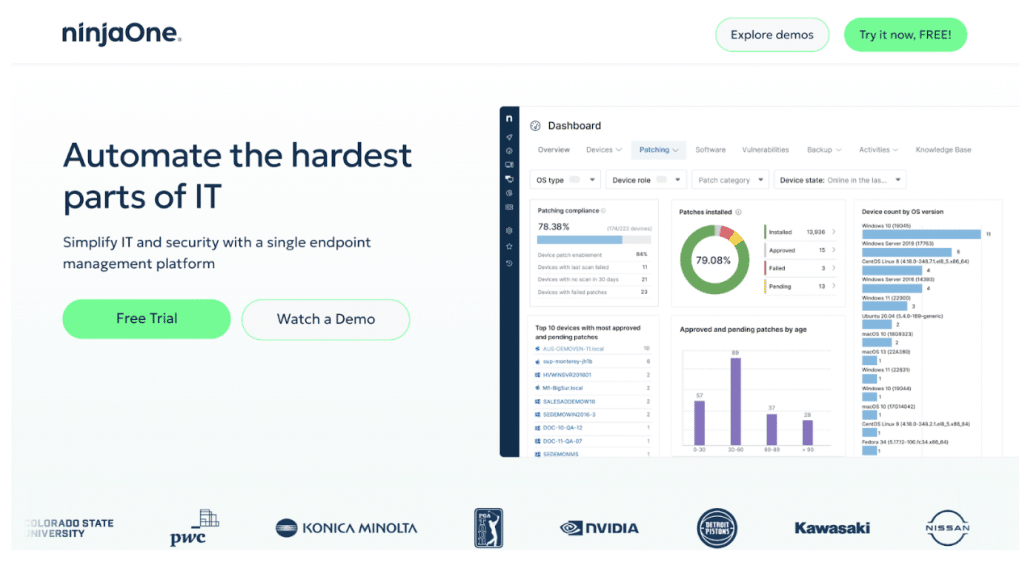
Replacing one of the earlier entries to avoid duplication within the same vendor family, NinjaOne offers a comprehensive patch-management capability bundled within a remote monitoring and management (RMM) platform. It supports Windows, macOS and Linux OS patching, automates discovery and deployment at scale, and gives teams a unified dashboard for endpoint health and compliance.
User reviews from 2025 emphasise its intuitive interface and fast time-to-value, especially for IT operations managing diverse endpoint estates. Because patching is embedded in the broader RMM capability, teams benefit from a single pane of glass for device monitoring, software distribution, automation scripts and patch deployments. For example, a distributed IT support team might use NinjaOne to automatically approve critical patches, deploy overnight to 1000+ endpoints, monitor success rates and alert on failures, all from one console.
Key Strengths:
- Integrated RMM + patch management simplifies endpoint operations
- Strong cross-platform support and large-scale automation
- Intuitive UI aimed at operational teams and accelerated time-to-value
3. ManageEngine Patch Manager Plus
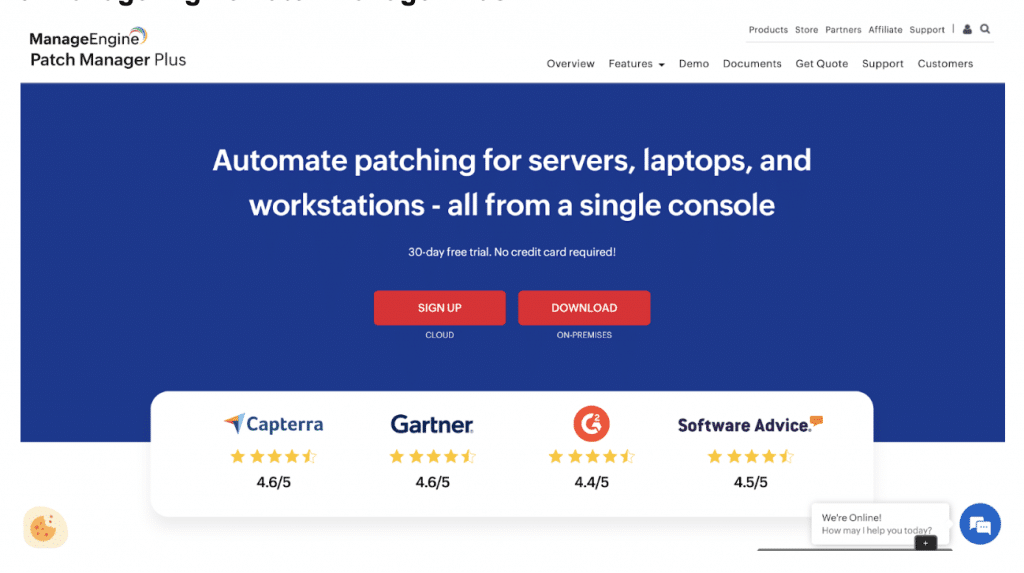
ManageEngine Patch Manager Plus is a robust, long-standing solution that shines in environments with diverse operating systems and extensive application portfolios. It supports Windows, macOS, and Linux, along with patching for more than 800 third-party applications.
The platform offers both cloud and on-premises deployment, giving flexibility to organisations with mixed infrastructure or strict compliance requirements. Its automation engine manages the full patch lifecycle, from scanning and testing to approval, deployment, and reporting.
Many enterprises use ManageEngine for its detailed audit trails and compliance dashboards, which simplify internal and external reporting. It’s a practical choice for teams that need granular control but want to avoid building a patch process from scratch.
Key Strengths:
- Broad third-party application coverage and cross-platform patching
- Choice of on-premises or cloud deployment
- Reliable automation and compliance-ready reporting features
4. Microsoft Intune (Endpoint Manager)
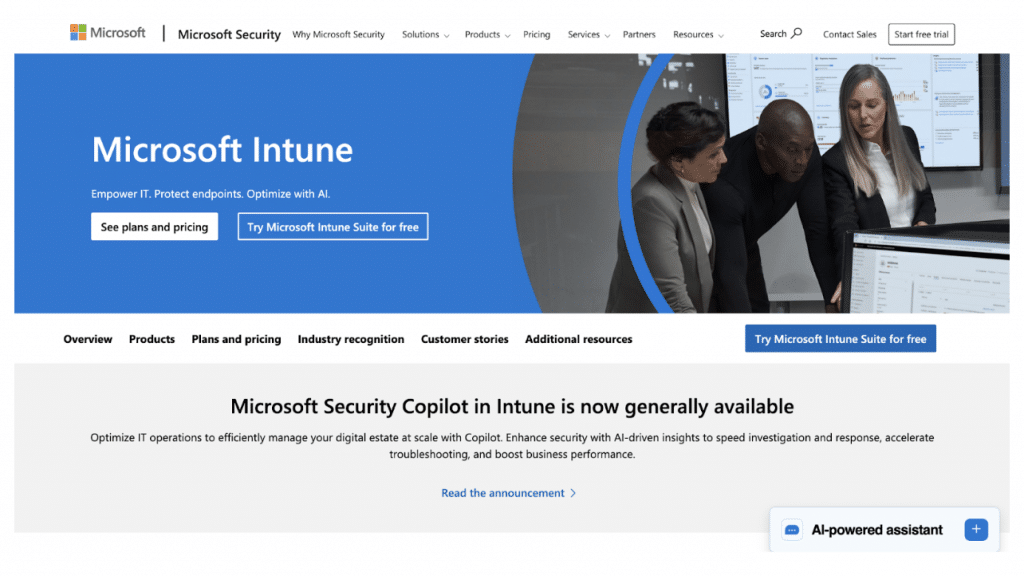
Microsoft Intune, part of Microsoft Endpoint Manager, has become a go-to option for organisations already embedded in the Microsoft ecosystem. While not a dedicated patch-management platform, it offers solid patching functionality for Windows and integrates seamlessly with Microsoft 365, Azure AD, and Defender for Endpoint.
In 2025, Intune continues to expand its automation and reporting features, especially for Windows Autopatch and Endpoint Analytics. IT admins can define update rings, defer or fast-track critical patches, and manage devices in hybrid cloud environments, all from the same console used for device and app management.
Enterprises that standardise on Microsoft technology find Intune appealing because it centralises device compliance and patching within a single policy framework. However, teams requiring extensive third-party patching or non-Windows OS coverage may prefer pairing it with a specialised tool.
Key Strengths:
- Deep integration within Microsoft’s security and management ecosystem
- Unified policy and compliance control across devices
- Ideal for Windows-centric or Microsoft-first organisations
5. Automox
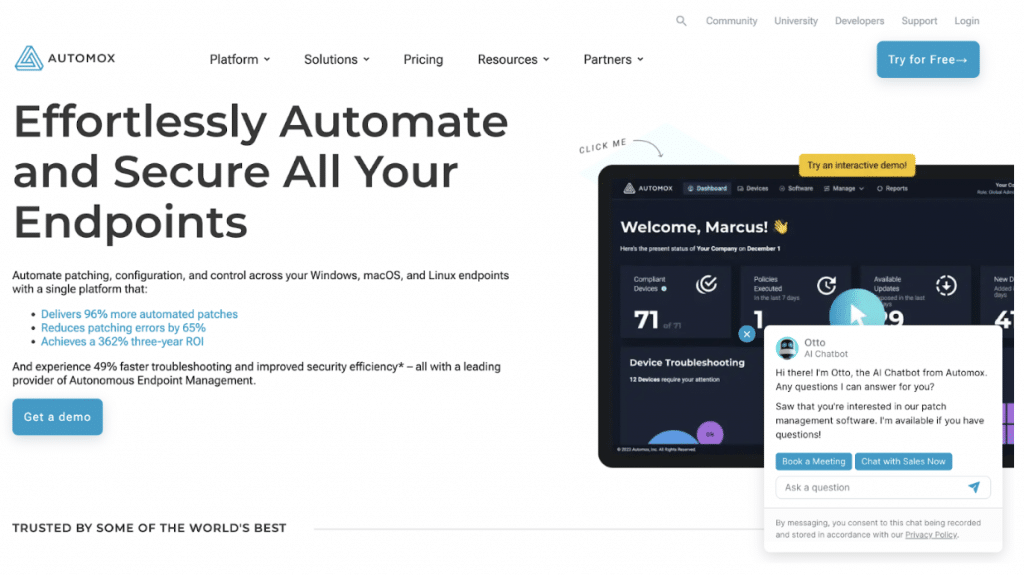
Automox delivers cloud-based, automated patch management for modern, distributed workforces. Built for simplicity and scalability, it supports Windows, macOS, and Linux, offering policy-driven patching and remediation through a single, lightweight agent.
Its 2025 version adds stronger scripting (“Worklets”) for configuration automation, improved real-time dashboards, and deeper API integration for IT orchestration. Many security teams value Automox’s ability to maintain consistent patch posture across devices that rarely connect to internal networks.
Typical deployments involve remote and hybrid enterprises that need to automate patching without relying on VPNs or traditional servers. Automox’s policy-based automation reduces manual maintenance time while maintaining visibility and auditability across global endpoint fleets.
Key Strengths:
- Fully cloud-native platform with rapid automation capabilities
- Cross-platform support with strong scripting and API extensibility
- Excellent fit for remote-first and hybrid organisations
Additional Contenders
- GFI LanGuard – An integrated vulnerability scanning and patch-management tool, effective for SMBs and network-centric operations.
- SysAid – ITSM platform with built-in patch-management modules, suited for teams seeking unified endpoint and service-desk operations.
- Patch My PC – A niche specialist, particularly strong when integrated with Microsoft ConfigMgr for third-party application patching at lower cost.
Conclusion
Patch-management tools differ widely in focus and depth, but they share one imperative: scale securely in a distributed world. For fast deployment and effortless remote patching, Action1 leads the pack. Ivanti Neurons suits large enterprises seeking risk-driven intelligence and tight security integration. ManageEngine balances deep third-party coverage with flexible deployment. Microsoft Intune excels in Microsoft-first environments with unified management needs. Automox serves cloud-first teams prioritising simplicity and automation.
Ultimately, the best platform depends on your mix of devices, compliance requirements, and operational maturity. What’s clear is that patch management is no longer a background task, it’s a frontline defense, central to any resilient IT strategy.
Last Updated on October 27, 2025